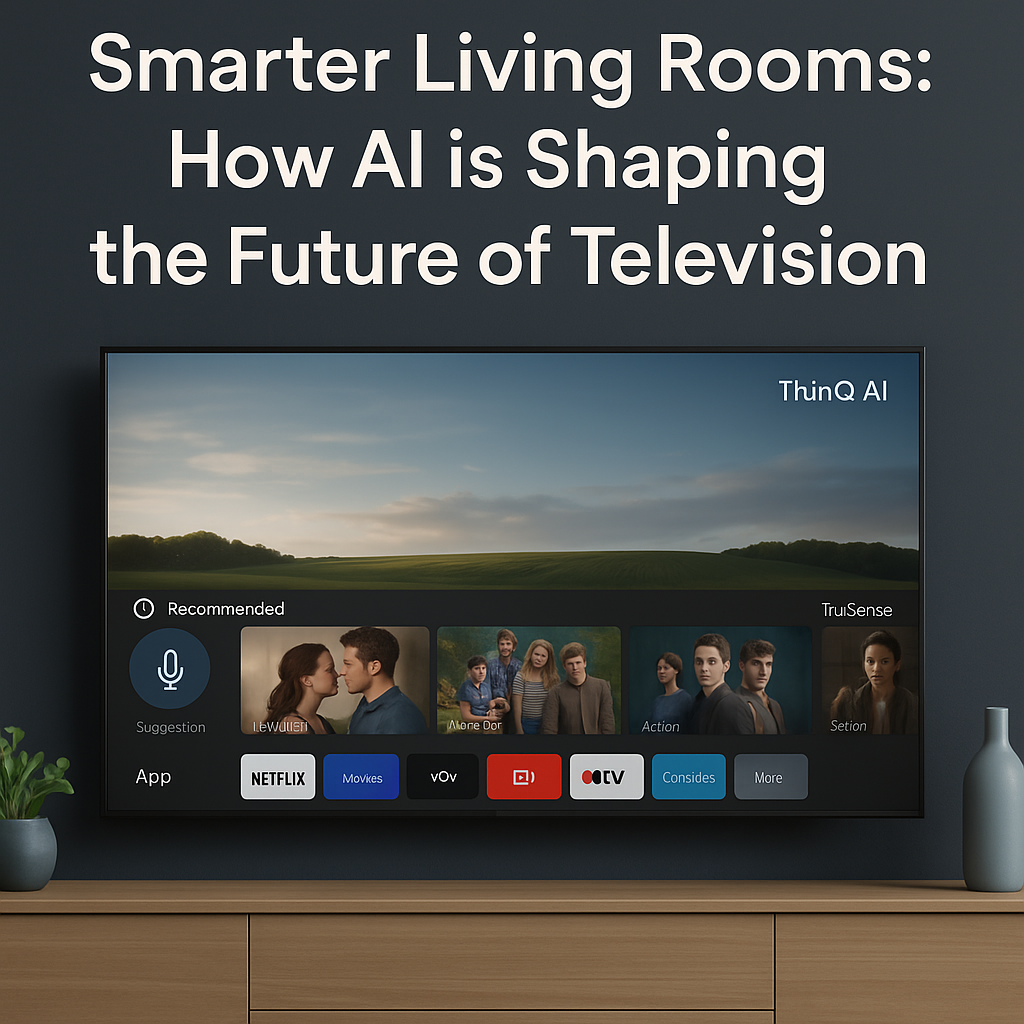
Smarter Living Rooms: How AI is Shaping the Future of Television
From being a passive box in the corner of the room, television has advanced significantly. It is now the focal point of the smart living room thanks to the integration of artificial intelligence and machine learning; it can learn from user behaviour, adjust to preferences, and connect with other smart devices with ease. TVs now respond, suggest, and react to create an immersive, interactive experience that goes beyond simply watching content.
From Passive Watching to Personalized Viewing
The way that content is found and appreciated is being redefined by AI. Smart TVs can make personalised content recommendations by using machine learning to examine your viewing preferences, history, and even your daily routine. Your TV learns and adjusts to your preferences, whether you prefer comedies on Sunday mornings or thrillers on weeknights.
ThinQ AI does more than just make recommendations. It automatically modifies preferences, suggestions, and even interface layouts based on the identification of various users within a household. The viewing experience feels very personal because of this type of tailored attention.
Talk to Your TV: Voice ssistants That Understand You
Smart TVs with voice capabilities can now comprehend context and natural language. Your TV reacts instantly when you say phrases like "Lower the volume a bit" or "Find crime documentaries." These systems converse intuitively rather than merely following commands.
Additionally, ThinQ AI has sophisticated voice recognition that can distinguish between various users based on their voice and adjust responses appropriately. You no longer have to learn remote shortcuts or navigate awkward menus. Simply speak, and the system will comprehend.
Your TV as the Control Center of the Smart Home
Beyond entertainment, AI-enabled televisions have become central hubs for smart homes. You can control connected lights, fans, air conditioners, and more — all from your TV screen.
With ThinQ AI, TVs integrate smoothly into the wider smart ecosystem, allowing you to adjust your smart thermostat, check who’s at the door, or dim the lights — all with a few voice commands or simple remote gestures. It’s an effortless, unified control experience.
Smarter Display and Sound with TruSense
AI isn’t just powering content and control — it’s enhancing how content looks and sounds. TruSense technology is designed to analyze room conditions and viewing content in real time. Based on ambient lighting, it adjusts brightness and contrast for optimal clarity. Whether you’re watching during a sunny afternoon or a late-night binge, the display adapts automatically.
TruSense also delivers intelligent audio tuning. It identifies the type of content playing — movies, sports, news, or music — and adjusts the sound accordingly. This ensures crisper dialogue in dramas, deeper bass in action scenes, and clearer commentary in live sports.
Resolution Enhancement and AI Upscaling
AI-driven upscaling has brought new life to older content. Through pattern recognition and frame-by-frame enhancement, TVs can upscale standard or HD content into stunning 4K or even near-8K quality.
This is particularly useful when streaming lower-resolution videos or watching classic shows. The image becomes sharper, colors more vivid, and overall detail far more engaging — all without changing the original source.
Environmental and Motion Awareness
Some smart TVs, including those with TruSense, go a step further by sensing movement and presence in the room. If no viewer is detected for a period of time, the TV can dim or pause to conserve energy. When someone enters the room, it can subtly display weather updates, reminders, or resume playback.
This intelligent environment-awareness helps create a viewing experience that feels alive — your TV isn't just reacting to your commands; it's anticipating your needs.
Conclusion
The integration of AI and machine learning is transforming the television into more than just an entertainment device — it’s becoming an intelligent companion in the living room. They are leading a change, offering features like personalized content, advanced voice interaction, environment-based optimization, and seamless smart home connectivity.
As televisions continue to learn, adapt, and respond to our lifestyles, the future of TV is not just smart — it’s intuitive, immersive, and deeply human.
